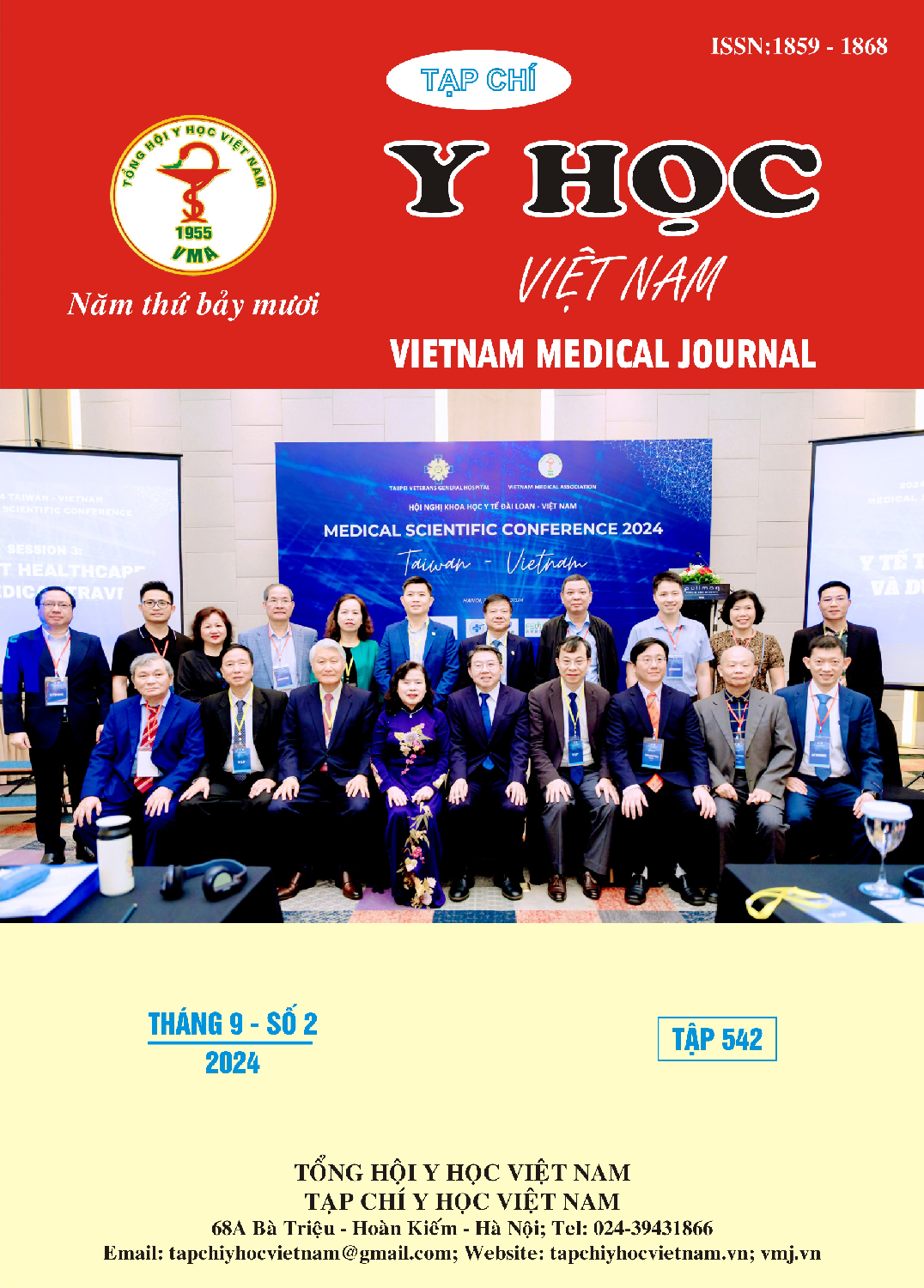ĐẶC ĐIỂM PHÂN BỐ VÀ KHÁNG KHÁNG SINH CỦA CÁC LOÀI VI KHUẨN PSEUDOMONAS SPP. PHÂN LẬP TẠI BỆNH VIỆN QUÂN Y 103
Nội dung chính của bài viết
Tóm tắt
Mục tiêu: Nghiên cứu đặc điểm phân bố và kháng kháng sinh của các loài vi khuẩn Pseudomonas spp. không bao gồm Pseudomonas aeruginosa phân lập từ người bệnh tại Bệnh viện Quân y 103 giai đoạn 2014-2022. Đối tượng và phương pháp nghiên cứu: Thiết kế nghiên cứu mô tả, đối tượng nghiên cứu là các chủng vi khuẩn Pseudomonas spp. phân lập từ người bệnh tại Bệnh viện Quân y 103 giai đoạn 2014-2022. Kết quả: Tổng số 58 chủng Pseudomonas spp. phân lập được trong thời gian nghiên cứu từ 2014-2022, P. putida là loài gây bệnh phổ biến nhất (63,8%). Pseudomonas spp. phân lập được chủ yếu từ người bệnh nam giới (74,1%), nhóm người bệnh ≥ 60 tuổi (43,8%), bệnh phẩm nước tiểu (39,7%), các khoa ngoại (34,5%). Pseudomonas spp. có tỷ lệ nhạy cảm cao nhất với Amikacin (64,8%), tiếp theo là Gentamycin (53,8%) và Tobramycin (52,0%). Ngược lại, các vi khuẩn này kháng cao nhất với các kháng sinh như Trimethoprim/sulfamethoxazole (87,0%), Ticarcillin/clavulanic acid (78,7%) và Levofloxacin (72,0%). Kết luận: Nghiên cứu cho thấy Pseudomonas spp. chủ yếu phân lập từ nước tiểu và bệnh phẩm hô hấp. Pseudomonas putida là loài vi khuẩn gây bệnh phổ biến nhất trong chi Pseudomonas (ngoại trừ Pseudomonas aeruginosa). Pseudomonas spp. kháng cao nhất với Trimethoprim/ sulfamethoxazole, Ticarcillin/ clavulanic acid và Levofloxacin; nhạy cảm cao nhất với Amikacin.
Chi tiết bài viết
Từ khóa
Pseudomonas spp., kháng kháng sinh, vi khuẩn, Pseudomonas putida
Tài liệu tham khảo
2. Hüsnü Baykal, et al., Clinical features, risk factors, and antimicrobial resistance of pseudomonas putida isolates. Medicine (Baltimore). (2022) Dec 2; 101(48): e32145.
3. Chan Ho Cho and Sang-Bumm Lee, Comparison of clinical characteristics and antibiotic susceptibility between Pseudomonas aeruginosa and P. putida keratitis at a tertiary referral center: a retrospective study. BMC Ophthalmology (2018) 18:204
4. Richa Gupta, et al., Incidence of Multidrug-Resistant Pseudomonas Spp. in ICU Patients with Special Reference to ESBL, AMPC, MBL and Biofilm Production. J Glob Infect Dis. (2016) Jan-Mar; 8(1): 25–31
5. Amy L. Leber, Clinical Microbiology Procedures Handbook, 2016: ASM Press.
6. Clinical and Laboratory Standards Institute (CLSI), Performance Standards for Antimicrobial Susceptibility Testing 32nd ed. CLSI supplement M100. (2022).
7. Seong Eun Kim, et al., Nosocomial Pseudomonas putida Bacteremia: High Rates of Carbapenem Resistance and Mortality. Chonnam Medical Journal (2012); 48(2): 91-95.
8. Brittan S. Scales, et al., Microbiology, Genomics, and Clinical Significance of the Pseudomonas fluorescens Species Complex, an Unappreciated Colonizer of Humans. Clin Microbiol Rev. (2014) Oct; 27(4): 927–948.


